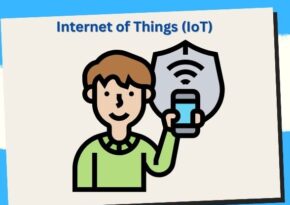
How GDPR is Shaping the Future of AI Development
Explore key challenges and solutions for achieving GDPR compliance in AI and how to manage data protection effectively.
How to Achieve GDPR Compliance in AI Development 

As artificial intelligence (AI) continues to advance, it’s transforming industries by driving innovation and optimizing processes. However, with great power comes great responsibility. One of the most significant challenges AI developers face today is ensuring that their technologies comply with regulations, particularly the General Data Protection Regulation (GDPR). This regulation, which governs data protection and privacy in the European Union (EU), has far-reaching implications for AI development.
In this guide, we will explore how to achieve GDPR compliance in AI development, offering useful tips and best practices to navigate this complex landscape. Whether you’re a seasoned developer or just getting started, this article will provide you with the insights you need to ensure your AI projects align with GDPR requirements.
1. Understanding GDPR and Its Relevance to AI Development 

The Basics of GDPR
The GDPR, which came into effect in May 2018, is a legal framework that sets guidelines for the collection and processing of personal data of individuals within the European Union. Its primary goal is to protect individuals’ privacy and give them more control over their personal data.
Why GDPR Matters in AI Development
AI systems often rely on large datasets to function effectively. These datasets frequently include personal data, such as names, email addresses, browsing history, and even biometric data. GDPR is particularly relevant to AI because it regulates how personal data is collected, processed, and stored. Non-compliance can lead to hefty fines and reputational damage, making it crucial for AI developers to prioritize GDPR compliance from the outset.
2. Key GDPR Principles to Consider in AI Development 

To achieve GDPR compliance, it’s essential to understand and implement the following key principles:
a) Data Minimization 
What It Means: Collect and process only the minimum amount of personal data necessary for the intended purpose.
How to Implement:
- Purpose Limitation: Clearly define the purpose of data collection and ensure that only relevant data is collected.
- Anonymization and Pseudonymization: Consider anonymizing or pseudonymizing data to reduce the risk of identifying individuals. For example, instead of storing full names, you can use hashed identifiers.
b) Lawfulness, Fairness, and Transparency 
What It Means: Ensure that data processing is lawful, fair, and transparent to individuals.
How to Implement:
- Consent Management: Obtain explicit consent from individuals before collecting their data. Use clear and concise language to explain how their data will be used.
- Transparent Policies: Develop and maintain privacy policies that are easily accessible and understandable by the general public.
c) Data Accuracy 
What It Means: Ensure that personal data is accurate and kept up-to-date.
How to Implement:
- Regular Audits: Conduct regular data audits to identify and correct any inaccuracies.
- User Control: Provide users with the ability to access and update their personal data.
d) Data Security and Integrity 
What It Means: Implement appropriate security measures to protect personal data from unauthorized access, disclosure, alteration, or destruction.
How to Implement:
- Encryption: Use encryption techniques to secure data both at rest and in transit.
- Access Controls: Limit access to personal data to only those who need it for their work.
- Regular Security Assessments: Perform regular security assessments and penetration tests to identify and address vulnerabilities.
e) Accountability 
What It Means: Demonstrate compliance with GDPR by maintaining detailed records of data processing activities.
How to Implement:
- Documentation: Keep comprehensive records of data processing activities, including the purpose of processing, data categories, and recipients.
- Data Protection Impact Assessments (DPIAs): Conduct DPIAs for high-risk processing activities to assess and mitigate potential risks to individuals’ rights and freedoms.
3. Best Practices for GDPR Compliance in AI Development 

To ensure your AI projects are GDPR-compliant, consider adopting the following best practices:
a) Incorporate Privacy by Design 
What It Is: Privacy by Design is a proactive approach to data protection that involves integrating privacy features into the design and development of AI systems from the outset.
How to Implement:
- Early Consideration: Address data protection and privacy concerns at the initial stages of AI development, not as an afterthought.
- Cross-Functional Collaboration: Work closely with legal, compliance, and security teams to ensure that privacy considerations are embedded in every aspect of the AI project.
b) Ensure Explainability in AI Models 
What It Is: Explainability refers to the ability to understand and interpret the decisions made by AI models.
How to Implement:
- Transparent Algorithms: Develop AI models that provide clear explanations for their decisions, particularly when they involve automated decision-making processes.
- User-Friendly Interfaces: Create interfaces that allow users to easily understand and control how their data is used by AI systems.
c) Regularly Review and Update Data Processing Agreements (DPAs) 
What It Is: Data Processing Agreements (DPAs) are contracts between data controllers and processors that outline the responsibilities of each party in handling personal data.
How to Implement:
- Regular Updates: Regularly review and update DPAs to ensure they reflect current GDPR requirements and any changes in data processing activities.
- Third-Party Compliance: Ensure that all third-party processors involved in your AI project are also GDPR-compliant.
d) Implement Robust Data Deletion Policies 
What It Is: Data deletion policies outline how and when personal data will be deleted.
How to Implement:
- Automated Deletion: Implement automated processes to delete personal data when it is no longer needed for the original purpose.
- User Rights: Allow users to request the deletion of their personal data and ensure that such requests are promptly fulfilled.
4. Common Challenges in GDPR Compliance for AI Development and How to Overcome Them 

While achieving GDPR compliance in AI development is essential, it can also be challenging. Here are some common challenges and tips on how to overcome them:
a) Balancing Data Utility and Privacy 
The Challenge: AI models often require large amounts of data to be effective, but GDPR mandates data minimization and privacy.
Solution: Use techniques like federated learning, which allows AI models to be trained on decentralized data sources without sharing raw data. This approach helps maintain data utility while preserving privacy.
b) Addressing Bias in AI Models 
The Challenge: AI models can unintentionally perpetuate biases present in the training data, leading to unfair or discriminatory outcomes.
Solution: Regularly audit AI models for biases and take corrective actions, such as rebalancing datasets or adjusting algorithms to mitigate bias. Ensure that your team is diverse and aware of potential biases in data.
c) Ensuring Compliance Across Borders 
The Challenge: GDPR applies to the personal data of EU residents, but AI development often involves cross-border data transfers.
Solution: Implement Standard Contractual Clauses (SCCs) or other GDPR-approved mechanisms to ensure that cross-border data transfers comply with GDPR. Additionally, consider hosting data within the EU to minimize legal complexities.
4. The Role of AI Developers in GDPR Compliance 

As an AI developer, you play a critical role in ensuring GDPR compliance. Here are some key responsibilities to keep in mind:
a) Stay Informed 
GDPR is a dynamic regulation, and its interpretation can evolve over time. Stay informed about the latest developments in GDPR and how they impact AI development.
b) Collaborate with Legal and Compliance Teams 
Work closely with legal and compliance teams to ensure that your AI projects meet all GDPR requirements. Regular communication and collaboration can help identify potential compliance issues early in the development process.
c) Document Everything 
Maintain detailed documentation of all data processing activities, including the rationale behind data collection and processing decisions. This documentation can serve as evidence of compliance in case of an audit or investigation.
d) Prioritize User Privacy 
Always prioritize the privacy and rights of individuals when developing AI systems. Make sure that users are fully informed about how their data will be used and that they have control over their personal information.
Benefits of Modern Communication Tools in the Workplace 
1. Enhanced Collaboration
Modern communication tools, such as Slack and Microsoft Teams, facilitate real-time collaboration among team members, regardless of their physical location. This fosters better teamwork and project management.
2. Increased Productivity
Tools like Asana and Trello streamline task management and project tracking, reducing the time spent on administrative tasks and allowing employees to focus on their core work.
3. Improved Communication Efficiency
With instant messaging and video conferencing tools, teams can communicate more efficiently, reducing the need for lengthy email threads and improving response times.
4. Flexibility and Remote Work
Communication tools enable remote work by allowing employees to stay connected from anywhere. This flexibility can lead to higher job satisfaction and a better work-life balance.
5. Better Knowledge Sharing
Platforms like Confluence and SharePoint make it easier to share knowledge and documentation across the organization, ensuring that valuable information is accessible to all team members.
6. Enhanced Security
Modern communication tools offer robust security features, including encryption and secure access controls, helping protect sensitive information from unauthorized access.
7. Scalability
As organizations grow, communication tools can scale to accommodate increased user numbers and additional features, making it easier to manage expanding teams and projects.
8. Integration with Other Tools
Many communication tools integrate seamlessly with other software, such as CRM systems and productivity apps, creating a unified workflow and enhancing overall efficiency.
9. Real-Time Feedback
Instant messaging and collaboration platforms allow for real-time feedback and quick decision-making, which can accelerate project timelines and improve outcomes.
10. Cost Savings
Cloud-based communication tools often reduce the need for expensive hardware and infrastructure, leading to cost savings on IT and maintenance.
Case Studies on the Evolution of Communication Tools in the Workplace 
1. IBM’s Adoption of Slack
IBM transitioned to Slack for internal communication, significantly enhancing team collaboration and productivity. The move allowed for real-time messaging and file sharing, leading to faster decision-making and project completion.
2. Zoom’s Rise During the Pandemic
During the COVID-19 pandemic, Zoom became a critical tool for remote work and virtual meetings. Its ease of use and reliability helped organizations maintain communication and collaboration despite physical distancing.
3. Microsoft’s Integration of Teams
Microsoft integrated Teams into its Office 365 suite, providing a comprehensive communication and collaboration platform. The integration improved workflow efficiency and streamlined project management across the organization.
4. Google’s Use of Hangouts Meet
Google’s Hangouts Meet, now Google Meet, was adopted for video conferencing and collaboration. The tool’s integration with Google Workspace enhanced team coordination and supported remote work.
5. Slack’s Impact on GitHub
GitHub adopted Slack to facilitate developer communication and collaboration. The tool’s channels and direct messaging features improved team coordination and project management, boosting productivity.
6. Salesforce’s Use of Chatter
Salesforce implemented Chatter as an internal social network for employee communication and collaboration. Chatter’s features helped employees share knowledge and collaborate on projects more effectively.
7. Dropbox’s Introduction of Paper
Dropbox introduced Paper, a collaborative document-editing tool, to enhance team collaboration and streamline project workflows. Paper’s real-time editing and commenting features improved productivity.
8. Atlassian’s Expansion of Confluence
Atlassian expanded Confluence to support better knowledge management and documentation. The tool’s integration with other Atlassian products like Jira improved team collaboration and project tracking.
9. Cisco’s Implementation of WebEx
Cisco’s WebEx was adopted for web conferencing and virtual meetings, facilitating communication and collaboration for remote teams and global projects.
10. Asana’s Role in Project Management
Asana became a key tool for project management and team collaboration, helping organizations track tasks, deadlines, and project progress in a unified platform.
Key Takeaways on the Evolution of Communication Tools in the Workplace 
1. Embrace Integration
Modern communication tools often integrate with other software, creating a seamless workflow and enhancing productivity. Leveraging these integrations can optimize your team’s efficiency.
2. Prioritize Security
Choose communication tools with robust security features to protect sensitive information and ensure compliance with data protection regulations.
3. Adopt Cloud-Based Solutions
Cloud-based communication tools offer flexibility, scalability, and cost savings. They support remote work and provide access to communication channels from anywhere.
4. Leverage Real-Time Communication
Tools that offer real-time messaging and video conferencing facilitate faster decision-making and improve team collaboration.
5. Focus on User Experience
Select tools with a user-friendly interface to ensure ease of adoption and minimize disruptions to your team’s workflow.
6. Consider Mobile Access
Ensure that communication tools offer mobile access to support employees who need to stay connected while on the go.
7. Evaluate Collaboration Features
Look for tools that support collaborative features such as file sharing, document editing, and project tracking to enhance team productivity.
8. Monitor Performance and Usage
Regularly review the performance and usage of communication tools to identify areas for improvement and ensure they meet your organization’s needs.
9. Stay Updated on Innovations
Keep abreast of advancements in communication technology to take advantage of new features and tools that can benefit your organization.
10. Foster a Communication Culture
Encourage a culture of open communication and collaboration within your organization to maximize the effectiveness of your communication tools.
Frequently Asked Questions (FAQs) About Communication Tools in the Workplace 
1. What are communication tools in the workplace?
Communication tools in the workplace are software applications and platforms used to facilitate interaction and collaboration among team members. Examples include email, instant messaging, video conferencing, and project management tools.
2. How do communication tools improve productivity?
Communication tools improve productivity by streamlining interactions, reducing response times, and enabling efficient collaboration on tasks and projects. They also minimize the need for lengthy email chains and physical meetings.
3. What are the benefits of using cloud-based communication tools?
Cloud-based communication tools offer benefits such as flexibility, scalability, cost savings, and remote access. They allow teams to collaborate from anywhere and scale as the organization grows.
4. How can I choose the right communication tool for my organization?
When choosing a communication tool, consider factors such as ease of use, integration capabilities, security features, scalability, and cost. Evaluate the needs of your team and choose a tool that aligns with your organization’s goals.
5. What role does security play in communication tools?
Security is crucial in communication tools to protect sensitive information from unauthorized access and cyber threats. Look for tools with features like encryption, secure access controls, and compliance with data protection regulations.
6. How can communication tools support remote work?
Communication tools support remote work by providing platforms for virtual meetings, real-time messaging, and collaborative document editing. They help remote teams stay connected and work together effectively.
7. What are the advantages of real-time communication?
Real-time communication allows for immediate feedback, faster decision-making, and more dynamic collaboration. It helps teams stay aligned and address issues promptly.
8. How often should communication tools be updated?
Communication tools should be updated regularly to ensure they have the latest features, security patches, and performance improvements. Stay informed about updates and new versions to keep your tools current.
9. Can communication tools improve team collaboration?
Yes, communication tools enhance team collaboration by providing channels for sharing information, discussing ideas, and working on projects together. They facilitate seamless interaction and coordination among team members.
10. What are some emerging trends in communication tools?
Emerging trends in communication tools include the integration of artificial intelligence (AI) for automated responses, advanced analytics for performance monitoring, and the use of virtual reality (VR) and augmented reality (AR) for immersive collaboration experiences.
Conclusion: Navigating GDPR Compliance in AI Development 

GDPR compliance is not just a legal requirement; it’s a critical aspect of responsible AI development. By understanding and implementing the principles of GDPR, adopting best practices, and staying informed about the latest developments, AI developers can create systems that respect individuals’ privacy and build trust with users.
While the challenges of GDPR compliance can be daunting, they also present an opportunity for innovation. By embracing privacy by design, ensuring explainability, and addressing biases, AI developers can create ethical and compliant AI systems that benefit both businesses and society.
Remember, GDPR compliance is an ongoing process. Continuously review and update your practices to ensure that your AI projects remain aligned with the latest regulatory requirements. By doing so, you’ll not only avoid potential fines but also contribute to the responsible and ethical development of AI technologies.
So, let’s get started on creating AI systems that are not only powerful but also respect the privacy and rights of individuals!
Key Phrases
- GDPR compliance in AI
- Data protection in AI development
- AI and GDPR regulations
- Ensuring GDPR compliance
- AI privacy guidelines
- GDPR impact on AI
- AI development best practices GDPR
- GDPR challenges in AI
- Compliance strategies for AI
- Navigating GDPR in AI projects
Best Hashtags
- #GDPRCompliance
- #AIDevelopment
- #DataProtection
- #PrivacyInTech
- #GDPRRegulations
- #AIInnovation
- #TechCompliance
- #DataPrivacy
- #AIandGDPR
- #RegulatoryCompliance
Save/Share this story with QR CODE
Disclaimer
This article is for informational purposes only and does not constitute endorsement of any specific technologies or methodologies and financial advice or endorsement of any specific products or services.
 Need to get in touch?
Need to get in touch?

We appreciate your reading. 
1.) 

Your DONATION will be used to fund and maintain NEXTGENDAY.com
Subscribers in the Philippines can make donations to mobile number 0917 906 3081, thru GCash.
3.) 
4.) 
AFFILIATE PARTNERS

World Class Nutritional Supplements - Buy Highest Quality Products, Purest Most Healthy Ingredients, Direct to your Door! Up to 90% OFF.
Join LiveGood Today - A company created to satisfy the world's most demanding leaders and entrepreneurs, with the best compensation plan today.





















 Putting People First: The Power of Human-Centered AI
Putting People First: The Power of Human-Centered AI 



